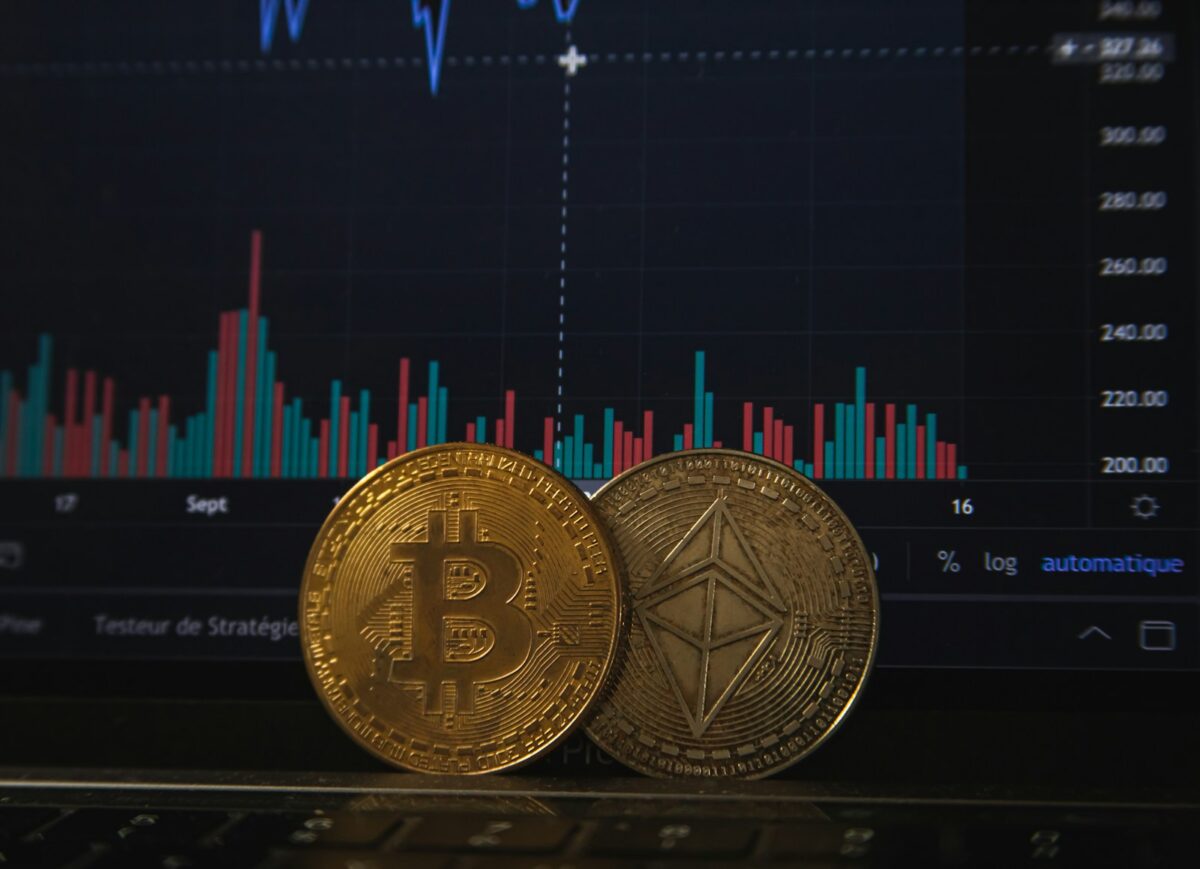
Understanding blockchain bridges

To enable seamless transfer of tokens and assets between different distributed ledgers, interoperability solutions known as bridges play a pivotal role. These mechanisms facilitate the movement of value by locking an asset on one network and issuing a wrapped representation on another, preserving its usability without compromising security.
Effective connectivity requires reliable protocols that maintain consensus and prevent double-spending during cross-chain transfers. By examining how various chains interact through dedicated pathways, one can identify challenges related to latency, trust assumptions, and finality guarantees intrinsic to each ecosystem.
Analyzing token wrapping processes reveals the complexities behind maintaining asset equivalence across networks. Wrapped tokens act as stand-ins representing original holdings while enabling participation in applications unavailable on the source chain. This layered approach enhances liquidity but demands rigorous validation to uphold integrity throughout multi-network operations.
Cross-Chain Connectivity: The Role of Bridges in Token Transfer
To enable seamless transfer of tokens and assets across different decentralized networks, specialized protocols known as bridges facilitate cross-chain interoperability. These mechanisms allow users to move digital assets from one blockchain to another without requiring centralized exchanges or intermediaries. By doing so, they expand the functional scope of tokens beyond their native environments, fostering liquidity and utility across diverse ecosystems.
The technical foundation of such connectors relies on locking an asset on the source network while minting a corresponding wrapped version on the destination chain. This wrapping process preserves the original value and characteristics but adapts the token’s format to be compatible with the target platform’s standards. A key consideration involves maintaining secure proof-of-ownership and preventing double-spending during these transfers.
Mechanisms Behind Cross-Network Transfers
Different bridging solutions employ varying methods to achieve cross-chain token movement. Some utilize lock-and-mint schemes where tokens are locked in a smart contract on the origin chain, triggering issuance of wrapped equivalents on the receiving network. Others use burn-and-release techniques that burn wrapped tokens on one side to release the original asset locked elsewhere. This bidirectional flow requires robust consensus algorithms and cryptographic verification to ensure integrity.
An illustrative example is Polygon’s PoS Bridge connecting Ethereum and Polygon chains, which locks ETH on Ethereum and mints wrapped ETH (wETH) on Polygon. Another case is Binance Smart Chain’s bridge with Ethereum, enabling BEP-20 versions of ERC-20 tokens through similar wrapping and transfer logic. Each approach balances throughput, security assumptions, and decentralization differently based on underlying protocol design.
Security Challenges and Mitigation Strategies
The complexity of linking distinct networks exposes such connectors to multiple attack vectors including fraud proofs absence, validator collusion, or vulnerabilities in smart contracts managing asset custody. High-profile incidents involving compromised bridges have highlighted risks inherent in trust assumptions about validators or custodial entities controlling locked funds.
- Decentralized validation: Employing multi-party consensus reduces reliance on single actors by distributing verification responsibilities among independent nodes.
- Audited contracts: Rigorous formal verification enhances trustworthiness by preemptively identifying potential exploits within bridge codebases.
- Timelocks and slashing: Introducing time delays for withdrawals coupled with penalties discourages malicious behavior among validators.
These measures collectively enhance resilience but cannot eliminate all systemic risks tied to cross-network operations where differing finality models coexist.
Diversification Across Multiple Networks
The proliferation of blockchains optimized for various purposes necessitates multi-directional interconnectivity beyond simple pairwise links. Emerging solutions integrate bridges capable of supporting transfers among several heterogeneous chains simultaneously via hub-and-spoke architectures or relay-based systems. Examples include Cosmos’ Inter-Blockchain Communication (IBC) protocol enabling token movement across numerous zones with standardized packet relays facilitating atomic swaps.
This layered connectivity supports complex decentralized finance compositions requiring asset mobility at scale while preserving security guarantees tailored for each environment involved.
The Future Outlook for Multi-Network Asset Mobility
Evolving experimental infrastructures focus increasingly on minimizing trust dependencies through advanced cryptographic primitives like zero-knowledge proofs combined with light client verifications embedded directly into destination chains. Such developments aim at creating near-trustless channels ensuring verifiable finality proofs for each transferred token state update without relying heavily on third-party validators.
This trajectory encourages comprehensive composability between distinct ecosystems enabling developers to experiment freely with new financial products spanning multiple ledgers simultaneously. Research into scalable cross-ledger consensus protocols continues actively, offering fertile ground for innovation in secure digital asset interoperability across an ever-expanding array of competing networks worldwide.
How blockchain bridges work
To facilitate seamless connectivity between different decentralized networks, specialized protocols enable the transfer of tokens and other digital assets across independent ecosystems. These mechanisms rely on locking assets in one chain while minting corresponding wrapped tokens on the target network, preserving value and ownership without compromising security or decentralization.
The core function of these systems lies in their ability to maintain interoperability, allowing users to move native assets across distinct infrastructures without requiring centralized intermediaries. This process typically involves smart contracts that monitor asset custody status on the source network and trigger issuance or redemption operations on the destination chain.
Technical fundamentals of cross-chain token transfer
A typical approach employs a two-step protocol: first, locking the original asset within a designated contract or custodian module; second, issuing an equivalent amount of wrapped tokens on the receiving ledger. For example, when moving Ether from Ethereum to Binance Smart Chain, the bridge locks ETH in a secure vault and mints BEP-20 pegged ETH analogs usable within BSC’s environment.
This methodology ensures that total circulating supply remains constant across all networks involved by enforcing strict custodial guarantees. Verification systems–ranging from federated validators to trustless relayers–track transaction finality and confirm state changes without risking double-spending or fraud, thus reinforcing transactional reliability.
- Lock-and-mint: Original tokens are immobilized; wrapped equivalents created elsewhere.
- Burn-and-release: Wrapped tokens are destroyed to unlock underlying assets back on their native platform.
- Validator consensus: Network nodes validate cross-chain messages before asset movement finalization.
Diverse architectures exist depending on underlying design philosophies. Some employ light client verification whereby one chain runs a simplified version of another’s consensus algorithm for direct proof validation; others use oracle-driven models aggregating external attestations to enforce correctness.
The resulting cross-network communication significantly expands user capabilities by enabling complex multi-chain interactions such as decentralized finance (DeFi) composability and liquidity migration. Studying case-specific implementations like Polkadot’s parachains or Cosmos’ inter-blockchain communication reveals varied trade-offs between scalability, decentralization, and security guarantees inherent in each solution.
Common Security Risks of Cross-Chain Connectivity Solutions
When transferring assets between different decentralized networks, vulnerabilities often arise from the complexity of maintaining secure interoperability. One primary risk is the reliance on centralized or semi-centralized validators that authorize token transfers. These entities act as custodians for wrapped tokens representing locked assets on the source chain. If compromised, malicious actors can mint unauthorized wrapped tokens or release locked funds, leading to significant financial losses. Historical incidents such as the Poly Network exploit demonstrate how a single point of failure in signature verification or multisignature schemes can result in billions lost.
Another security challenge originates from smart contract flaws embedded within transfer protocols. Automated contracts governing cross-chain asset wrapping must precisely handle state updates across multiple ledgers without race conditions or reentrancy exploits. Bugs in these contracts can allow attackers to manipulate balances, double-spend tokens, or freeze user funds indefinitely. For example, errors in message passing between heterogeneous environments often cause desynchronization, undermining trust and creating attack surfaces during asset reconciliation phases.
Connectivity solutions must also address risks related to cryptographic bridges that facilitate interoperability by linking consensus mechanisms across networks. Weaknesses in cryptographic assumptions–such as insecure threshold signatures or flawed randomness generation–can enable adversaries to forge proofs authorizing illegitimate transfers. Additionally, the inherent delay in finality confirmation when transferring tokens between chains allows time windows for front-running attacks and transaction reordering, which may disrupt expected token flows and market integrity.
Lastly, governance models controlling upgrade paths and emergency interventions present attack vectors through social engineering or collusion among key stakeholders managing the bridge infrastructure. Inadequate transparency combined with opaque decision-making processes can expose users’ locked assets to abrupt protocol changes or censorship risks. Continuous audits paired with open-source development practices help mitigate these threats but do not eliminate systemic risks tied to human factors and operational security within cross-network transfer systems.
Cross-chain asset transfer steps
The initial step in transferring tokens across different decentralized networks involves locking the original asset on the source chain. This locking mechanism ensures that the asset is securely held and cannot be double-spent during the cross-chain operation. Specialized connectors facilitate this by monitoring transactions on the source network and generating cryptographic proofs of asset custody.
Following confirmation of the locked asset, a corresponding token is minted or unlocked on the destination network to represent the transferred value. This synthetic or wrapped token maintains parity with the original asset, preserving its economic properties while enabling interoperability between heterogeneous systems. Such mechanisms rely heavily on consensus protocols that verify legitimacy across both networks.
Detailed procedural breakdown
The transfer process typically unfolds through a sequence of technical stages:
- Verification: The system validates transaction data from the initial blockchain, ensuring authenticity via cryptographic signatures and consensus rules.
- Locking: The user’s tokens are locked in a smart contract or custodian wallet, preventing any unauthorized movement during transit.
- Proof generation: A proof, often a Merkle proof or zero-knowledge proof, is created to confirm that locking occurred under valid conditions.
- Submission to target network: The proof is submitted to a smart contract on the receiving chain which verifies it independently.
- Token minting/unlocking: Upon successful verification, equivalent tokens are minted or released for use within the destination environment.
- Completion notification: Both networks update their states to reflect completion, maintaining synchronized records of asset status.
This methodology enables effective connectivity between disparate ecosystems without compromising security or decentralization principles.
An illustrative case involves transferring ERC-20 tokens from Ethereum to Binance Smart Chain (BSC). Here, an intermediary protocol locks assets on Ethereum via a multisignature contract while issuing BEP-20 equivalents on BSC. The reverse procedure burns BEP-20 tokens and releases Ethereum originals when users wish to revert holdings. This bi-directional flow exemplifies practical cross-system interoperability achieved through trust-minimized relayers and consensus proofs.
The challenges inherent in cross-network transfers include latency introduced by finality times and potential risks linked to custodial intermediaries. Emerging solutions focus on improving throughput using optimistic rollups or threshold signature schemes that enhance validator decentralization. Experimental deployments demonstrate promising results where assets traverse several distinct ledgers seamlessly, expanding composability across financial protocols without sacrificing trust assumptions.
Selecting Reliable Bridge Tools: Strategic Recommendations and Future Outlook
Prioritize interoperability mechanisms that guarantee secure wrapped token issuance and redemption, minimizing counterparty risk during cross-chain transfers. Opt for protocols with verifiable consensus models and on-chain finality proofs to ensure seamless connectivity between different networks without compromising asset integrity.
Evaluate bridges based on their support for diverse token standards, latency metrics in transaction settlement, and audit transparency. Favor solutions employing fraud proofs or optimistic rollups that reduce reliance on centralized validators while enhancing throughput across ecosystems.
Key Technical Insights and Emerging Trends
- Wrapped Tokens as Cross-Chain Anchors: Using wrapped assets enables locked native tokens representation on foreign networks, but the wrapping mechanism’s security directly impacts transfer reliability.
- Interoperability Protocol Variants: From hashed time-lock contracts (HTLCs) to light client verification, each model offers trade-offs in speed, trust assumptions, and scalability.
- Diverse Network Compatibility: Effective tools must handle heterogenous consensus algorithms and token standards such as ERC-20, BEP-20, and others seamlessly.
- Connectivity Layer Innovations: Emerging relay architectures leveraging zk-SNARKs or threshold signatures promise reduced gas costs and enhanced privacy during asset movement.
The trajectory of multi-network asset transfer points toward modular frameworks combining on-chain validation with off-chain data aggregation. Future developments will likely integrate adaptive routing algorithms that dynamically select optimal paths based on network congestion and fee structures. This evolution encourages experimentation with trust-minimized designs enhancing composability across decentralized applications.
Experimentation with hybrid custody models incorporating hardware security modules (HSMs) alongside cryptographic proofs can further mitigate risks associated with wrapped tokens’ lifecycle management. Researchers should investigate how layered consensus interactions affect finality times and potential replay vulnerabilities when bridging between rapidly updating ledgers versus slower ones.
This analytical approach to evaluating bridge tools not only strengthens current deployment strategies but also fuels innovation toward resilient multi-network ecosystems where seamless transfer of value underpins next-generation decentralized finance infrastructures. Consider hands-on trials focusing on latency benchmarks under varying load conditions to deepen understanding of practical constraints inherent in cross-network communications.


